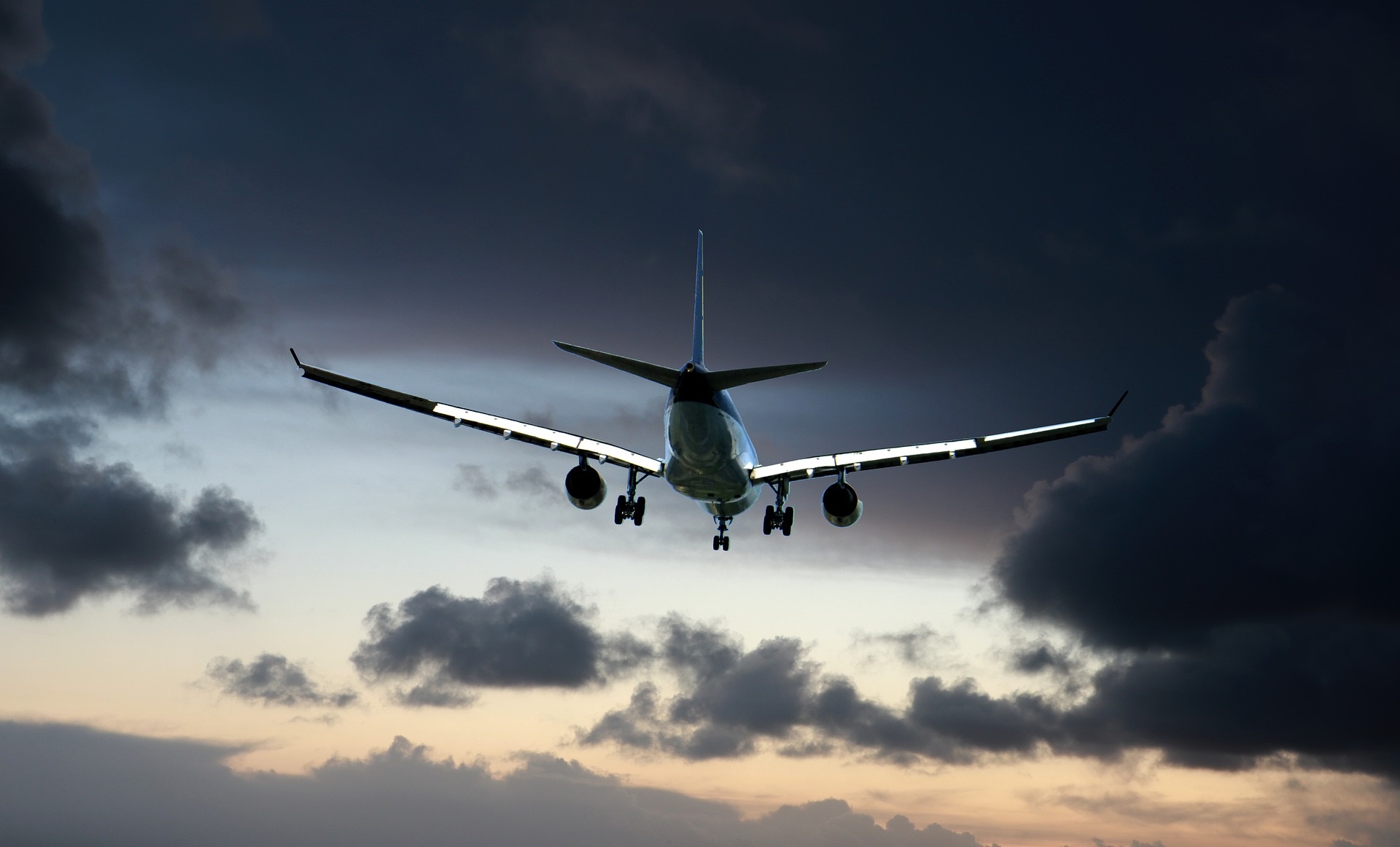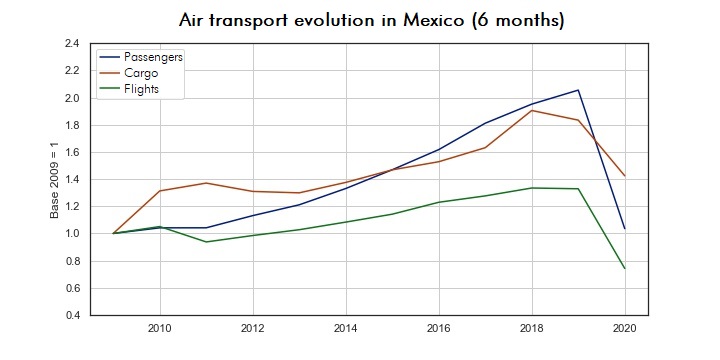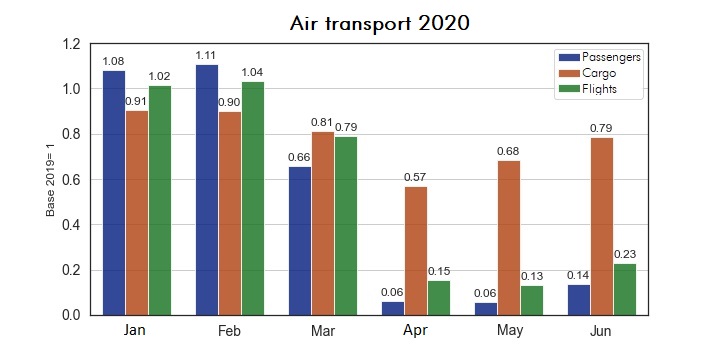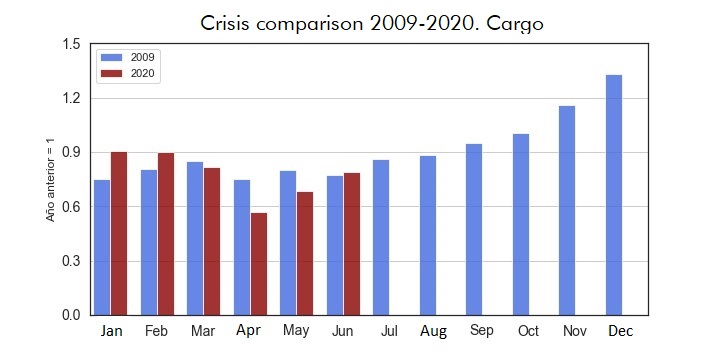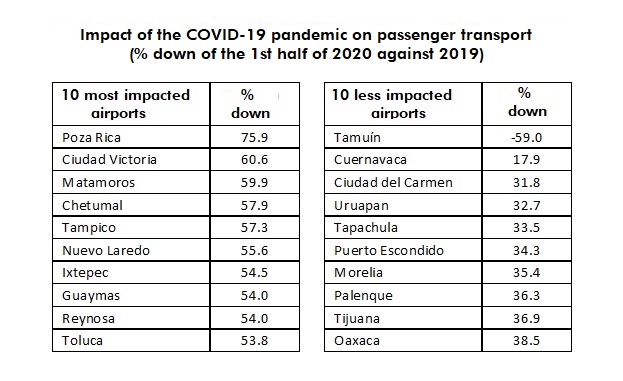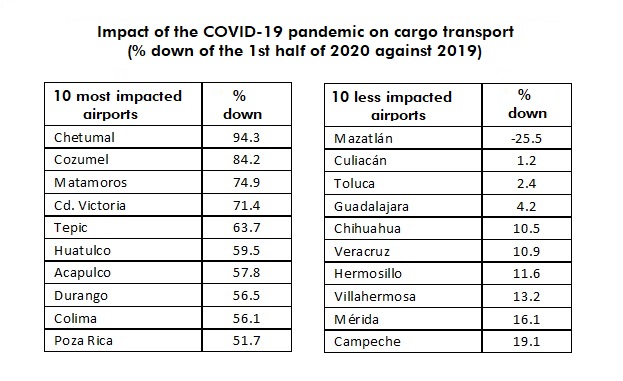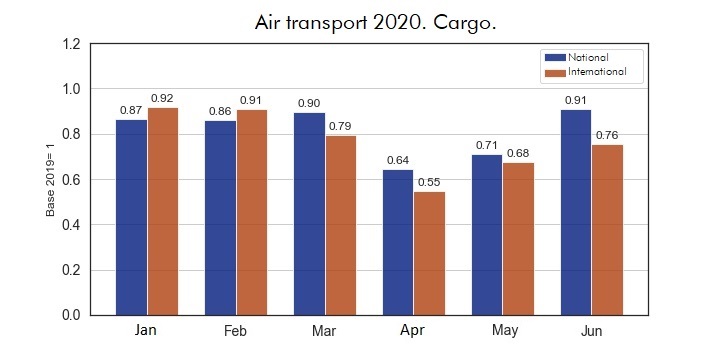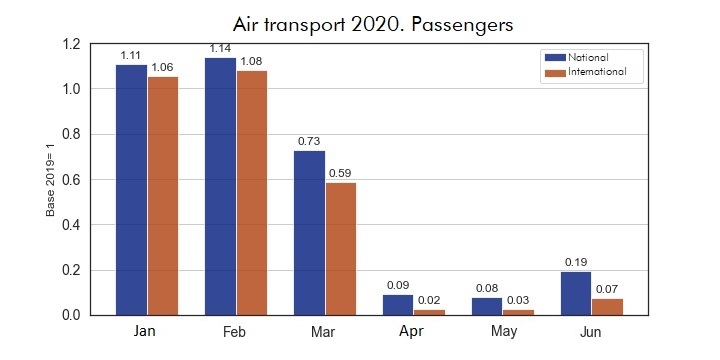Aviation and COVID-19. Data of a fulminant impact.
Aviation is one of the industries that we most associate to the development and impact of the COVID-19 pandemic. Inevitably, it was the instrument by which the international flow of people contributed to the spreading of the disease. Today it is emblematic of the effects of the paralysis of the world economy. In the immediate future, its resilience and agility, as well as the use of technology, will be indispensable to normalize the flow of people and goods, under circumstances set by psychological factors and the availability of treatments and vaccines. Because all of this, I decided to analyze the impact of the pandemic on aviation in Mexico.
In the 2010s, air transport in Mexico maintained a pace of growth among the highest in the world, well above growth in our economy (measured by the Gross Domestic Product). Passenger transport in 2019 was more than double than in 2009, while cargo transport grew by almost 70%. This growth was leveraged on larger aircraft and greater efficiency, making the number of flights to grow only 40%.
Own elaboration with data published by the Federal Civil Aviation Agency and Mexico's Central Bank
This growth positioned Mexican aviation as one of the most important in the world. According to the latest annual report of the International Civil Aviation Organization (ICAO),Mexico ranks 23rd in terms of people and goods transported, while the International Air Transport Association (IATA) states that the domestic market in Mexico is the 9th in the world. In 2019, 109 Mexican and foreign airlines operated in Mexico, carrying 102 million passengers and 859 thousand tons of cargo.
Own elaboration with data published by the Federal Civil Aviation Agency
All this has changed with the COVID-19 pandemic, which has had a terrible impact on aviation in Mexico, in both long-term and short-term perspectives. In the 1st half of 2020, passenger transport was down to a 10 year ago level and cargo was back 5 years, while the number of flights is at the level of almost 2 decades ago. If we compare the month-to-month data against 2019, during April and May passenger transport was just 6% of the amount transported in the same months last year, while cargo suffered losses of up to 43%.
Own elaboration with data published by the Federal Civil Aviation Agency
The severity of the drop in the number of passengers and goods is unprecedented. To have a better idea, we made a comparison with the crisis that occurred in 2009 due to the global financial crisis and AH1N1 influenza, which took 4 years to recover. In freight transport, the impact in the 1st half of 2020 is like that of 2009 and since May there is a change in trend. However, in passenger transport the severity of the fall is unmatched. While there is a slight recovery in June, it is really a fulminant impact.
Own elaboration with data published by the Federal Civil Aviation Agency
Although the impact has been huge in all airports, the effect has been different in some. These are the 10 most affected airports and the 10 least affected in passenger transport in the 1st half of 2020.
Own elaboration with data published by the Federal Civil Aviation Agency
Similarly, we show the 10 most affected airports and the 10 least affected in freight transport compared to the 1st half of 2019. It is important to notice that the airports of Toluca and Guadalajara, which are the 5th and 2nd most important in the country, had an impact of less than 5%.
Own elaboration with data published by the Federal Civil Aviation Agency
As we said before, since May there is a recovery in cargo volume. As of June, international freight transport is already close to 2019 level. In contrast, in passenger transport the domestic market is the one that has begun to recover, although its levels are far from the ones of last year.
Own elaboration with data published by the Federal Civil Aviation Agency
Below are the 10 airports that presented a larger recovery in June, both in passenger and cargo transport. Airports such as Cuernavaca in passengers, and Mazatlan, Chihuahua, Toluca and Guadalajara in cargo, had in June levels higher than the same month in 2019.
Own elaboration with data published by the Federal Civil Aviation Agency
What are the prospects? In a scenario where the 2nd quarter recovery trend continues and the rest of the year cargo transport is like last year, the annual drop would be close to 10%, similar to the drop observed in 2009. However, it should be remembered that, before the pandemic, our country faced a scenario of economic slowdown that is difficult to reverse, so the next year's scenario is uncertain.
As far as passenger transport is concerned, recovery is conditional on countries lifting travel restrictions. According to the Kayak’s webpage, consulted on July 30, 2020, 88 countries are completely closed to international flights, 80 partially closed, 17 hoping to reopen soon and only 35 without restrictions (including Mexico). Thus, even though domestic transport starts to grow, international transport (which is 50% in our country) limits the prospects for recovery.
According to an estimate published by IATA, domestic transport is expected to recover next year, but in the case of international transport the process is expected to last 5 years, until 2024. The pace depends on three factors: the recovery of the personal economy, the changes in habits and protocols under the new normal, as well as the confidence of the passengers to travel, which will be influenced by the existence of a vaccine against COVID-19.
In this context, the resilience and agility of companies in the aviation industry is of paramount importance. They should have the capacity, not only to face and overcome the impact of the pandemic on their operations, but to, at the same time, establish innovations to operate in a different environment, with new non-contact processes, measures to ensure a safe environment before, during and after the flight, as well as mechanisms to comply with the protocols established by the authorities of different countries.
In a world characterized by the constant and global exchange of people and goods, it is impossible to think about the recovery of the countries' economies, and the normalization of people's lives, without air transport that is safe and adequate to the new circumstances. Aviation has a key role to play for our future after the COVID-19 pandemic, not because it is part of the problem, but because it is an indispensable component of the solution.
Luis Gerardo Fonseca Guzmán
Did you enjoy this post? Read another of our posts here.
